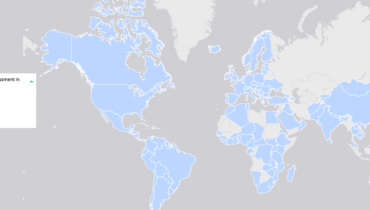This post originally appeared on the Pathfinders’ Justice for All blog.
The justice gap for women is growing in the context of the COVID-19 pandemic. The number of justice problems that women face is increasing, due to lockdowns and economic hardship, while the capacity to resolve these justice problems is decreasing.
The Justice for Women Amidst COVID-19 report, published on May 21, 2020, gathers available data and puts forth recommendations to accelerate action and increase justice for women in the current context. Jeni Klugman, Managing Director at the Georgetown Institute for Women, Peace and Security, authored the report. In this blog post, she shares the main highlights.
Since the COVID-19 pandemic exploded around the world, the urgent need to contain and mitigate virus transmission has brought unprecedented disruption to the ways that people live and work, and to the delivery of public services. Poverty is soaring, and short-term impacts could reverse a decade of worldwide progress in reducing poverty, with the Middle East, North and Sub-Saharan Africa, and South Asia especially hard-hit.
UN Women has outlined how the COVID-19 crisis can widen gender inequalities, including the loss of livelihoods, threats to sexual and reproductive health, the burden of care, and increased violence against women at home. We also know from experience with the Ebola crisis of 2014–2016 and elsewhere that the gendered implications of a crisis are often sidelined during a state of emergency — or as Julia Smith describes it, by the “tyranny of the urgent.”
When I was approached by UN Women, IDLO, Pathfinders and others to undertake a rapid appraisal of the impacts of the pandemic on women’s access to justice, we knew that the starting point was not good. Our Justice for Women report, published last year, documented pervasive gaps around the world, especially for women who are marginalized by poverty, ethnicity, and/or migration status. We nonetheless found promising practices and outlined five strategies to close justice gaps: 1. eliminating legal discrimination against women, 2. preventing and responding to intimate partner violence, 3. overcoming disadvantages for poor and marginalised women, 4. empowering women economically and as rights holders, and 5. including women as decision-makers.
Why does women’s inclusion matter?
The Justice for Women report documented the substantial case for investments in justice for women. This case is further buttressed by our analysis of the Women, Peace and Security (WPS) Index and the INFORM Global Risk Index, which measures country-level risk of a humanitarian crisis and disaster that would overwhelm national response capacity. The correlation between the WPS Index and the Global Risk Index is striking: 0.86. This correlation is much stronger than that between a country’s WPS Index rating and income per capita (0.62). This finding suggests women in countries that rank low on the WPS Index are at a major risk of exclusion, injustice, and insecurity amid the hazards created by the COVID-19 crisis.
As predicted by this correlation, we see the real-world consequences of the pandemic on women’s access to justice outlined in Chapter 2 of the Justice for Women Amidst COVID-19 report. Lockdowns and emergency orders have exacerbated existing risks for women in abusive relationships, women working without security and legal protection, women and girls at risk of harmful practices and discriminatory laws, as well as women in fragile humanitarian settings. And at a time when internet access is more important than ever to receiving life-saving information, services, and access to justice and government support, many women and girls face large barriers to mobile phone and internet connectivity. Too many women are excluded from such services because of local norms that keep women offline and obstacles in terms of affordability. As outlined by the Lancet, “people whose human rights are least protected are likely to experience unique difficulties from COVID-19.”
Innovative interventions emerging
There is some good news in the new Justice for Women Amidst COVID-19 report. Chapter 3 highlights a range of innovative interventions that are already underway, including efforts to prevent and respond to intimate partner violence, address legal and other disadvantage for poor and marginalized women, and to support collective action of women and women’s organizations.
Multiple platforms have emerged during the COVID-19 crisis to prevent and respond to intimate partner violence. Some use existing means of communication like WhatsApp, while others take advantage of free new applications or instant messaging. There are also innovative solutions to offer direct help to survivors through helplines and emergency services and do not require cell phones and internet access. Canada, for example, is encouraging women to use certain hand signals in video conversations to signal help.
Another welcome innovation in this unique crisis is that a number of governments around the world are providing emergency financial assistance regardless of a person’s pre-pandemic legal entitlements. So, while women who were in informal employment or out of the workforce are normally at an enormous disadvantage in a recession in terms of benefit eligibility, some will now receive benefits regardless of their former job status.
In the urgent face of the crisis, the focus on rapid response can mean that actions are gender-blind. It is important to ensure that gender intentionality is built into justice responses as governments accelerate and scale up their efforts.
Policy recommendations
Among the specific policy recommendations in Chapter 4 are:
- Replace full legal trials with interim judicial orders to promote the safety and well-being of women and children. Examples include: protection orders, restraining orders, orders for child maintenance and/or custody, injunctions against evicting widows and children from the matrimonial home, and injunctions against the marriage of a child.
- Protect women deprived of their liberty and release, on a case-by-case basis, pregnant women, imprisoned women with children, pre-trial detainees, elderly women, those with underlying health conditions, those detained for low-risk offences, and those with less than 12 months left to serve on their sentence.
- Ensure access to legal aid and enable poor people to seek justice that would be otherwise out of reach. Such services should be advertised extensively — in public but also on TV, social media, and via public service announcements — so that women know about them. This also suggests a strong role for civil society organizations (CSOs), which are often better networks of information for women in low- and middle-income countries.
- Support community-based paralegal organizations that can provide legal advice, alternative dispute resolution channels, and facilitate the dissemination of information more broadly in partnership with women in the media and local radio stations.
- Invest in data and monitoring and evidence-based policies: Justice leaders need timely access to relevant data and evidence on the justice impacts of COVID-19 and responses to the crisis, as well as evidence on the best ways to address those impacts. Across the board, it is important to collect sex-disaggregated data to understand the social and economic impacts of COVID-19 on women, especially at national and sub-national levels.
What is needed, appropriate, and feasible will of course differ by setting. While there are no simple solutions, this post shows that there are important principles and lessons on which we can draw to inform policies and program measures that mitigate the short- and long-term impacts of the pandemic on the lives and livelihoods of women and girls.


